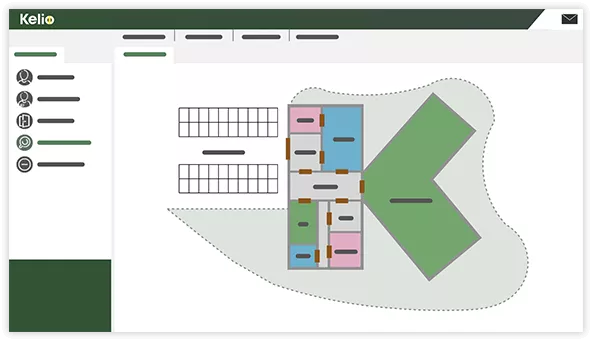
How do I choose a time clocking terminal for my organisation?
Installing a time clocking terminal and clocking software is an important undertaking that will affect how your business is organised. As such, it is important to ask the right questions when choosing a time clocking system.
Why should I install a clocking terminal at my organisation?
There are several purposes for which you may want to install a clocking terminal and a work time & attendance management system at your organisation:
- Calculating effective time worked in order to draw up payslips
- Ensuring compliance with labour laws and regulations regarding your employees’ work/life balance
- To help you organise your work and increase your organisation’s profitability
- To improve punctuality

What criteria should I be considering when choosing a clocking terminal?
The following criteria should be considered when choosing a time clocking tool:
- The number of employees who will be using the clocking system
- The number of sites within the organisation
- The constraints on activity within the organisation – do the employees have access to a PC? Are they mobile staff? Do they work in a confined, humid or dusty environment? Do you want to monitor how many work hours are dedicated to different clients or projects?
- What practical schedule types do you use? 3x8 schedule cycles, recurring totals for overtime or hours subject to increase, schedules for employees with on-call duty or compensatory leave, etc.
- What is your organisation’s growth profile? A clocking system must remain flexible so that it can be adapted to keep up with changes and growth at the organisation

What different types of clocking terminals and work time & attendance management systems are available?
Time clocking systems have taken a huge leap forward over the past few decades.
There are several different types of clocking terminal:
- RFID clocking terminal/badge clocking terminal
- Clocking terminal/badge clocking terminal connected to a building access reader
- Biometric clocking terminal
- Virtual clocking terminal, also known as a digital clocking terminal, computer-based clocking terminal or Intranet clocking terminal. The ideal clocking system for mobile employees, as it allows them to clock in and out via their smartphone, tablet or PC
These clocking systems are linked to a piece of clocking software known as the time & attendance management software, which allows you to collect the clocking data for your employees and automatically calculate the hours they have worked, their break times, their account updates, their rest times, etc.
There is also still the option of manual clocking terminals – mechanical clocking using small cards, or clocking using magnetic cards. However, such systems no longer provide the requisite security for your clocking system or your employees’ personal data in accordance with the latest standards. Furthermore, they also make data collection, re-input and calculation time-consuming, manual tasks that are susceptible to errors.

Anticipating how the clocking system will be used in practice at your organisation
Time clocking practices have evolved to adapt to more complex ways of working, such as:
- Teleworking
- Services provided outside the framework of the organisation
- Use of freelancers or temporary workers who use the clocking system temporarily
- Division of an employee’s working hours between different activities, clients or projects
In order to keep up with these practices, modern clocking terminals offer the following functions:
- Remote clocking
- Geolocation clocking
- Digital clocking
- Pre-registered clocking
- Activity clocking, i.e. measuring not just the hours an employee works, but also the activities they perform during this time
Clocking terminals have evolved: it’s time to move on to the clocking terminal 2.0!

What features do modern digital clocking terminals offer?
Once an organisation’s “police force” or “justice of the peace”, clocking terminals have now evolved into a networked tool for the various actors at the organisation.
AN AID FOR LOCAL MANAGERS
Modern time clocking tools:
- Alert managers to non-conformities (excessively long working hours, insufficient rest time) and inequalities in terms of how different employees are treated
- Block illegal time & attendance management actions
- Enable executives to make sure that their organisation conforms to the applicable standards
A TOOL FOR EMPLOYEES
Advanced clocking terminals provide employees with a number of different services:
- Secure clocking terminals guarantee effective monitoring of work hours and protect employees’ rights: right to rest, protection of personal data, etc.
- Networked digital clocking terminals give employees the autonomy to check their hours accounts themselves, verify their clocking actions, comment on unusual clocking actions, and perform transfers to their time-saving accounts. They also allow them to submit absence requests online and declare activities in real-time.
- Some clocking terminals give employees the option of communicating directly with HR using secure instant messaging.
- Collaborative clocking terminals allow users to exchange messages so that instructions can be passed between colleague working on different schedule cycles.
A clocking terminal will be accepted even more easily if it provides employees with services that offer true added value.
FIND OUT MORE ABOUT THE TACTILE CLOCKING TERMINAL FOR YOUR STAFF